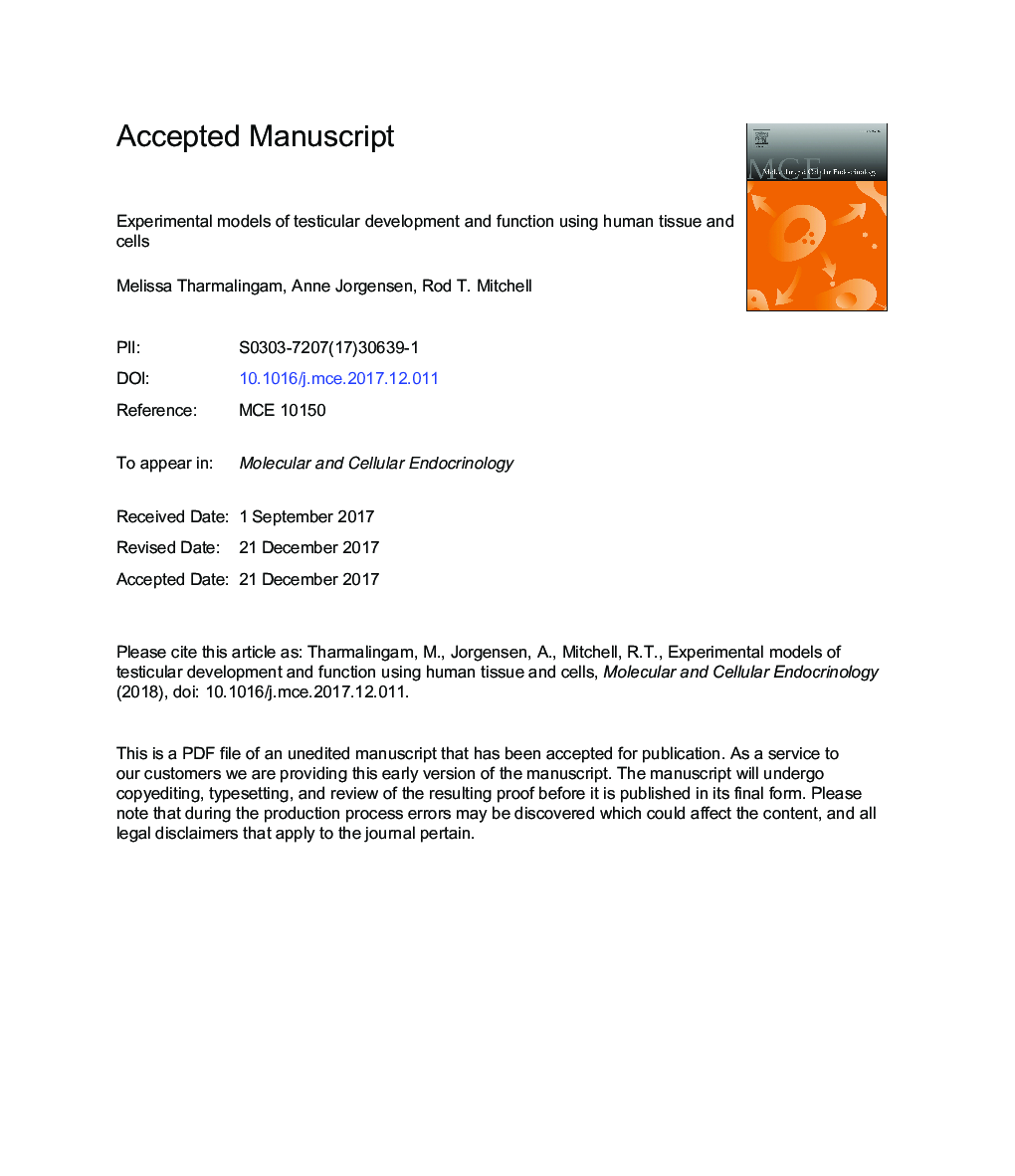| Article ID | Journal | Published Year | Pages | File Type |
|---|---|---|---|---|
| 8476453 | Molecular and Cellular Endocrinology | 2018 | 47 Pages |
Abstract
The mammalian testis has two main roles, production of gametes for reproduction and synthesis of steroid- and peptide hormones for masculinization. These processes are tightly regulated and involve complex interactions between a number of germ and somatic cell-types that comprise a unique microenvironment known as the germ stem cell niche. In humans, failure of normal testicular development or function is associated with susceptibility to a variety of male reproductive disorders including disorders of sex development, infertility and testicular cancer. Whilst studies in rodent models have provided detailed insight into the signaling pathways and molecular mechanisms that regulate the testis, there are important species differences in testicular development, function and reproductive disorders that highlight the need for suitable experimental models utilising human testicular tissues or cells. In this review, we outline experimental approaches used to sustain cells and tissue from human testis at different developmental time-points and discuss relevant end-points. These include survival, proliferation and differentiation of cell lineages within the testis as well as autocrine, paracrine and endocrine function. We also highlight the utility of these experimental approaches for modelling the effects of environmental exposures on testicular development and function.
Related Topics
Life Sciences
Biochemistry, Genetics and Molecular Biology
Cell Biology
Authors
Melissa D. Tharmalingam, Anne Jorgensen, Rod T. Mitchell,
